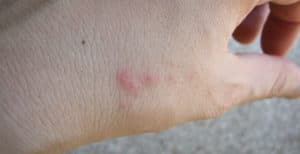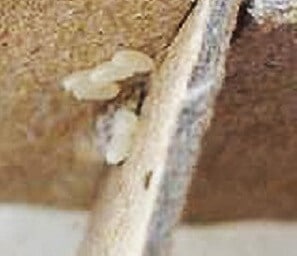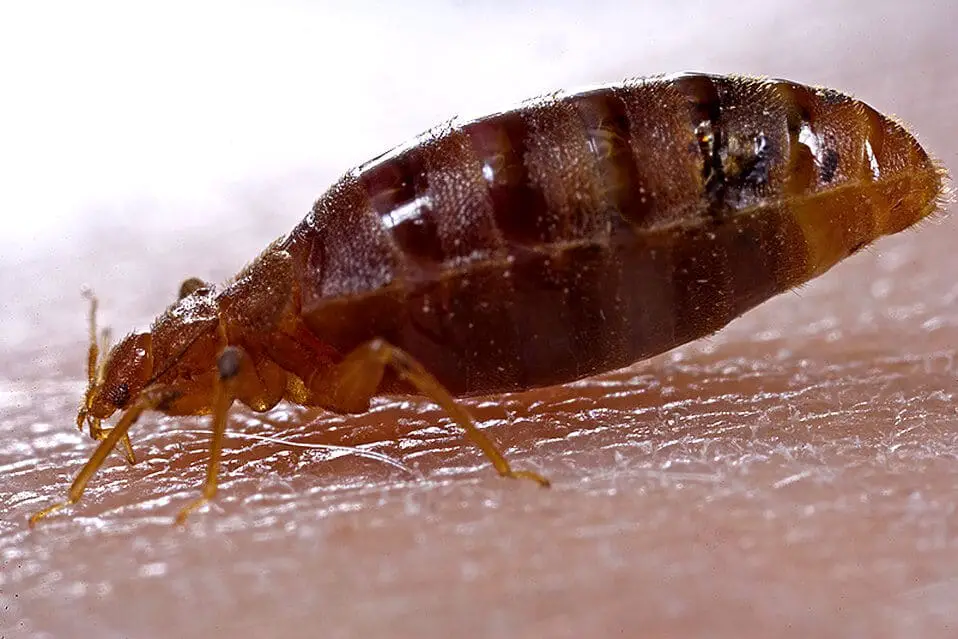The apartment was in shambles on the outside, but clean on the inside. White dust ran along the edges of the carpet. The resident told me that it was an attempt to get rid of bed bugs. I was inspecting a potential property to purchase and it was my first encounter with bed bugs.
Bed bugs have come back from obscurity to become possibly the worst insect infestation in known history. They infest cities and are common not only in hotels, but in public areas, schools, airports, and offices.
In this article, we are going to cover everything you need to know about how to get rid of bed bugs and how to keep them away!
Bed Bug Basics #1: Bed Bug Facts & Identification.
Bed Bug Basics #2: Sleep Good Tonight.
Bed Bug Basics #3: Get Rid Of Bed Bugs Permanently
Bed Bug Basics #4: Prevent Bed Bugs
Bed Bug Basics #5: Bed Bugs And Travel
Where Are Bed Bugs Found?
Bed bugs can be found nearly everywhere in the United States and across Europe and Asia.
Yet, in some studies, half of the owners whose homes tested for bed bugs were unaware they had bedbugs. This makes getting them under control problematic.
Bed bugs can be seen, but are so small that many people miss them. Plus, they are often nocturnal so they stay out of sight when it would be the easiest to see them.
- Inseams of mattresses, fabric, and furniture
- In cracks of walls
- Under loose carpet edges
- Under baseboards
- Behind light switch and electrical covers
- Behind loose wallpaper
- Between pages in books
- In screw and nail holes
- Inside phones and laptops
- In furniture joints
- In the junctions of bed frames and dressers
- Behind pictures and in curtains
Several studies have found that large populations of bed bugs are found away from, and off the bed.
How Do People Get Bed Bugs?
Bed bugs can’t fly and have limited jumping abilities. They crawl and climb. As a result, bedbugs spread by crawling onto something and then getting transported elsewhere.
They can crawl from one student’s backpack to an other’s and then hitch a ride to a new home. They can hide and nest in the crevices of a tennis shoe and be transported on the shoe. There are many ways that they are carried.
Bed bugs are not found just near a bed. They are now found in public areas. They can be found in schools, on school buses, at offices, airports, and on benches.
They are found in second hand and new clothing, in electrical devices, and furniture.
Bed bugs are found in the cities and in rural areas, although they are more common in larger populations because of how they spread.
How Do I Know If I Have Bed Bugs?
There are many signs of bed bugs. The worse the infestation, the easier it is to spot the signs. If you already know you have bed bugs and want a good night’s sleep, feel free to skip to Part 2 where we talk about what you can do tonight to protect against bed bugs and sleep well.
Unfortunately, many people have bed bugs for a while before realizing it.
Bed bugs reproduce very quickly. A single female bed bug usually lays 1-7 eggs a day. Females with ready access to food will lay more eggs.
As an example, let’s use an average of 3 eggs a day. In 2 months you can have 180-bed bugs and the babies are ready to start having more babies. As a result, in 3 months from the first bed bugs, you can have as many as 8100-bed bugs (assuming half the eggs were female).
If you suspect bed bugs do not ignore them. The problem won’t go away and it will only get worse!
The most common signs to bed bugs are:
- Bite marks: two puncture wounds and a possible rash, redness, or itchiness
- Dark trails or small round spots on the mattress and box springs
- Small “grains of rice” in crevices and cracks
- A musty odor
- Shed skins, eggs, and fecal matter
- Identify the actual bug
First, confirm that you have bed bugs. You might suspect bed bugs from a variety of signs. One sign is bite marks.
Bed bug bites create two puncture wounds in your skin. Often there are several bite marks in the same area. That’s because bed bugs often follow a leader to blood.
Bed bugs also inject an anesthetic and a coagulant into your blood. These foreign ingredients can cause a rash, a burning sensation, or itching for some people.
But,
As many as half the population doesn’t notice a bed bug bite and has no reaction to it. As we age, we are less likely to notice and react to bed bugs. The majority of elderly adults never notice bed bug bites.
Others feel itching, get a rash or feel the actual bite. Sometimes a small, hard, white welt develops at the bite location.

Photo Credit: hiyori13 on Flickr
Bed bugs often avoid the hairy parts of the body. They bite the arms, face, neck, and hands. They seldom bite the soles of the feet or the hands.
But, fleas bite the armpits, waste, bends of the elbows and knees and anywhere else there are skin folds or a tight place to hide and bite.
If you are being bitten and aren’t sure what insect is biting you, check for more signs of bed bugs.
Bed bugs often live in and around the bed. They love to hide in small places. They can hide in a place where a business card can fit. That means that they are usually found in places most people don’t think to even look.
Look under your sheets and your box springs. Check the areas where the fabric seams meat. Look in the corners and between where hardware meet. Check in your box springs.
Watch for any brown or red spots or streaks. After bed bugs eat your blood, they will leave behind small streaks of blood. They will also poop a dark brown or black feces. It will be small and spotty. If you see signs of this, you have bed bugs as fleas don’t leave these traces behind.
Look for very small “grains of rice”. Most people don’t look carefully enough to identify bed bug eggs. They also aren’t accustomed to looking in small crevices and will easily miss the eggs.
If you do happen to see small grains of rice and you didn’t eat takeout in your bed last night, then you have found bed bug eggs.

Another sign of heavy bed bug infestation is a musky smell. Bed bugs give off an odor that smells musky to most people. Lots of people don’t notice the smell.
Homes with great ventilation may also mask the smell.
Lastly, you might see insect husks, feces, and white eggs. Bed bugs shed their skin 5 times in their growth to adulthood. Finding this indicates a healthy-sized colony of bed bugs.
You may also notice various stages of bed bugs. They change in color and size, depending on whether or not they have just fed and what age they are. Here are several images of bed bugs:

As soon as you notice bed bugs, you may have a few very important questions:
Do Bed Bugs Transmit Human Diseases?
Tics, mosquitoes and bed bugs all bite and feed on your blood. Ticks and mosquitoes will transmit Lyme disease, STARI, Malaria, Zika, Malaria and a host of many other diseases.
But, bed bugs don’t transmit any disease!
There are zero cases of someone getting sick after a bed bug bite. There are two reasons for this. First, bed bugs only feed on one person a night. They don’t feed multiple times in a night. (That means you have a separate bed bug for every bite you get).
HIV only lasts an hour in a bed bugs system so it’s long gone before the next feeding. Other human pathogens last longer and that’s where a major difference in bed bugs comes out.
Both mosquitoes and bed bugs inject anesthetics and anticoagulants into your skin so they can feast easier. Mosquitoes are dangerous because they mix the blood of previous victims with the anticoagulants. The newest victim gets a little of the previous victim’s blood injected into them. That’s what spreads the diseases.
Did you know?
A bed bug is different! They are “clean” feasters. They don’t mix blood with the anticoagulants or anesthetics. So you aren’t injected with anyone else’s blood when a bed bug bites. That means you are safe from other illnesses vía bed bug.
Conclusion: What’s Next?
How do you get rid of bed bugs? In the next page of this guide, we are going to cover how you can still get a good night sleep if you just discovered bed bugs. You’ll learn what you can do today to get rid of them. There are things you can do before you go to bed that will give you a good night’s sleep. There are also a few things you don’t want to do or you will make it much worse.


